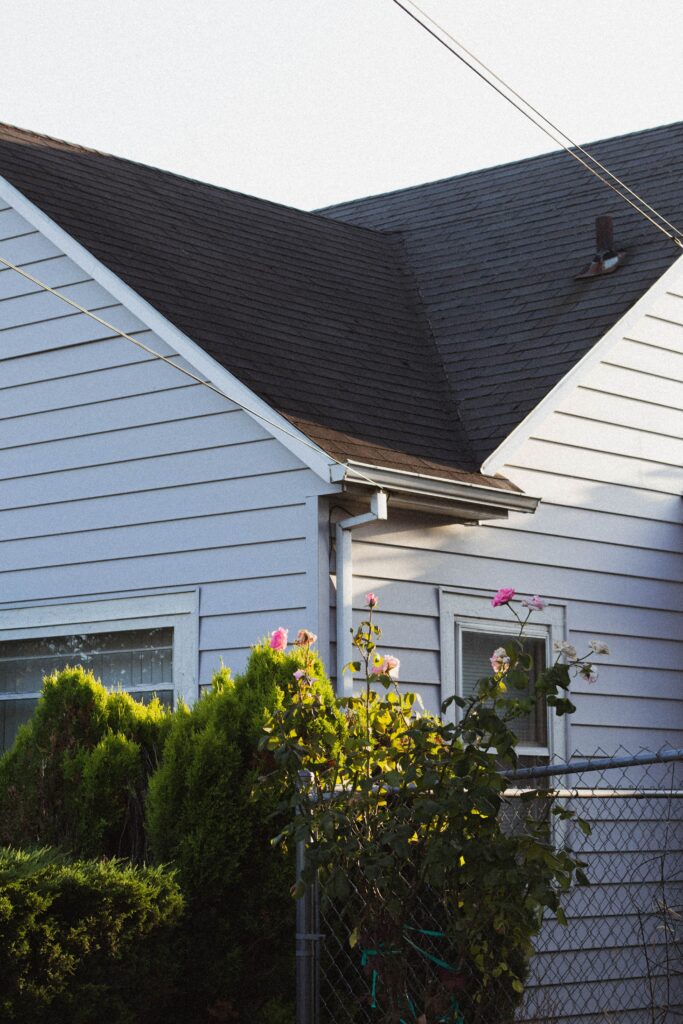Your roof plays a vital role in protecting your home from the elements, and it’s particularly vulnerable to damage during harsh weather conditions. Whether it’s fierce winds, heavy rains, or snowstorms, your roof needs extra care to ensure its longevity and structural integrity.
In this article, we’ll explore essential tips to safeguard your roof from these weather challenges, helping you maintain a secure and well-protected home.

Regular Roof Inspections and Maintenance
Regular roof inspections are crucial for identifying and addressing any issues before they become major problems. Start by visually inspecting your roof from the ground, looking for loose or missing shingles, damaged flashing, or signs of wear and tear.
If you notice any concerning signs, it’s time to call in a professional roofing contractor for a thorough inspection.
During inspections, professionals will look for leaks, damaged or curled shingles, clogged gutters, and other potential issues. They will also assess the condition of the flashing, which is crucial for preventing water penetration.
Regular maintenance, such as cleaning gutters and removing debris, will prevent clogs and ensure proper drainage. By addressing these issues promptly, you can avoid costly repairs down the line and extend the lifespan of your roof.
Reinforce Your Roof’s Structural Integrity
To withstand harsh weather conditions, it’s important to reinforce your roof’s structural integrity. Start by checking the attic for any signs of leaks or water damage.
Proper insulation and ventilation are crucial to prevent ice dams during winter and excess heat buildup during summer. Make sure your attic is adequately insulated and properly ventilated to regulate temperature and prevent moisture buildup.
Additionally, consider installing hurricane straps or clips to reinforce the connection between your roof and the walls of your home. These metal connectors can help prevent your roof from lifting or collapsing during high winds.
Also, think about sarking roof – a waterproof membrane that is put under the battens of the roof. It is like a second protected layer of your roof.
However, consult a professional roofer to assess the structural strength of your roof and recommend any necessary reinforcements based on your geographical location and prevalent weather conditions.
Prepare for Severe Weather in Advance
Like it-s already mentioned, another important aspect of protecting your roof is preparing in advance for severe weather conditions.
Before the storm season arrives, trim any overhanging tree branches that could potentially damage your roof if they break off during high winds. Clear your gutters and downspouts of debris regularly to ensure proper water drainage.
Consider installing gutter guards to prevent clogs and reduce the need for frequent cleaning.
In areas prone to heavy snowfall, remove snow from your roof using a roof rake to prevent excessive weight and the formation of ice dams. It’s also wise to have emergency supplies on hand, including tarps, plywood, and waterproof covers, in case you need to temporarily patch or protect your roof during severe weather events.
Choose Durable Roofing Materials
When protecting your roof from harsh weather conditions, selecting the right roofing materials is of utmost importance. Opt for durable and weather-resistant materials that can withstand the elements.
Asphalt shingles are a popular choice due to their affordability and resistance to wind and rain. Look for shingles with a high wind resistance rating to ensure they can withstand strong gusts.
Metal roofs are another excellent option for withstanding harsh weather conditions. They are highly durable, resistant to fire, and can withstand heavy snow and strong winds. Metal roofs also have a long lifespan, making them a worthwhile investment in areas prone to severe weather.
If you live in a region with frequent hailstorms, consider impact-resistant roofing materials. These materials are designed to withstand hailstones and minimize damage to your roof. Talk to a professional roofer to determine the best roofing materials for your specific climate and weather conditions.
Install Proper Drainage Systems
Proper drainage systems are essential for protecting your roof from water damage during heavy rains or snow melts. Clogged or inadequate gutters and downspouts can lead to water pooling on your roof, causing leaks and structural damage.
Regularly clean your gutters and downspouts to remove debris, leaves, and twigs.
Consider installing gutter guards to prevent debris from clogging your gutters. These guards allow water to flow freely while keeping leaves and other debris out.
Additionally, make sure your downspouts direct water away from your foundation and at least three to five feet away from your home to prevent water seepage and foundation damage.
Seek Professional Help
While some maintenance tasks can be performed by homeowners, it’s essential to seek professional help when needed. Professional roofers have the expertise and experience to identify and address potential issues effectively.
Don’t hesitate to call in a professional if you notice signs of roof damage or if you’re unsure about performing certain maintenance tasks yourself.
Professional roofers can conduct thorough inspections, provide maintenance recommendations, and handle repairs or replacements if necessary.
They can also offer advice on proper roof care and provide valuable tips to protect your roof from specific weather challenges in your area.
Protecting your roof from harsh weather conditions requires a proactive approach and careful consideration of various factors. Choosing durable roofing materials, reinforcing structural integrity, maintaining proper drainage, and seeking professional help when needed are all essential steps in safeguarding your roof.
By implementing these tips, you can ensure that your roof remains resilient in the face of adverse weather, providing long-lasting protection for your home.
Remember, regular maintenance and timely repairs are key to extending the lifespan of your roof and avoiding costly damage in the future.






